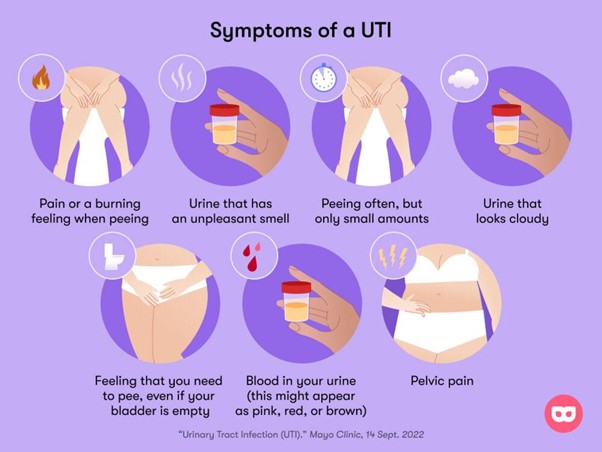The nurse is caring for an 84-year-old female client who was brought to the emergency room by her daughter, who related that her mother has had very recent mental status changes and periods of incontinence. What condition should the nurse first suspect?
Urinary tract infection
Acute kidney failure
Septic shock
Urinary stasis
The Correct Answer is A
A. Urinary tract infection
The symptoms described, including recent mental status changes and periods of incontinence, are suggestive of a urinary tract infection (UTI) in an elderly individual. UTIs are common among older adults and can cause a variety of symptoms, including confusion, which is often the primary manifestation in the elderly population. Other symptoms can include urinary urgency, frequency, and incontinence.
B. Acute kidney failure - While acute kidney failure can cause changes in urination and mental status, it is less likely to be the primary cause of these symptoms in this scenario. UTI is a more common and immediate concern given the symptoms described.
C. Septic shock - Septic shock is a severe condition that occurs when an infection leads to a life-threatening drop in blood pressure. While septic shock can cause altered mental status, it is a critical condition that often presents with more dramatic symptoms and requires immediate intensive care management. The symptoms described are more suggestive of a UTI.
D. Urinary stasis - Urinary stasis refers to the slowing or cessation of urine flow. While urinary stasis can contribute to the development of UTIs, it is not a condition that would cause sudden and acute mental status changes and incontinence on its own. UTI is a more likely cause of the symptoms described.

Nursing Test Bank
Naxlex Comprehensive Predictor Exams
Related Questions
Correct Answer is C
Explanation
A. Increased thickness of the subcutaneous skin layer - Aging typically results in thinning of the skin and subcutaneous tissue, making older adults more vulnerable to pressure ulcers rather than having increased thickness.
B. Changes in the character and quantity of bacterial skin flora - This is a common age-related change; however, it is not directly related to the course of treatment for a sacral pressure ulcer. Proper wound care can mitigate the impact of changes in skin flora.
C. Increased time required for wound healing - Aging often leads to a decline in the body's ability to repair and regenerate tissues, which can prolong the healing process of wounds, including pressure ulcers. Older adults may experience delayed wound healing compared to younger individuals.
D. Increased elasticity of the skin - Skin elasticity decreases with age, making older adults more susceptible to skin breakdown and pressure ulcers due to reduced skin resilience and ability to redistribute pressure. Increased elasticity would not affect the course of treatment positively but rather negatively in this context.
Correct Answer is A
Explanation
A. Sedentary lifestyle - Lack of weight-bearing exercise and physical activity is a significant risk factor for the development of osteoporosis. Weight-bearing exercises help maintain bone density and strength. Sedentary individuals are more prone to osteoporosis.
B. Long-term use of diuretics - Long-term use of certain medications, such as corticosteroids, can increase the risk of osteoporosis. Diuretics are not typically associated with osteoporosis risk, although some medications can affect bone health.
C. Prolonged stress - Chronic stress can have negative effects on overall health, but it is not a direct risk factor for osteoporosis.
D. Obesity - Obesity is generally considered a protective factor against osteoporosis. Individuals with higher body weight tend to have stronger bones due to the mechanical load placed on the bones, reducing the risk of osteoporosis.
Whether you are a student looking to ace your exams or a practicing nurse seeking to enhance your expertise , our nursing education contents will empower you with the confidence and competence to make a difference in the lives of patients and become a respected leader in the healthcare field.
Visit Naxlex, invest in your future and unlock endless possibilities with our unparalleled nursing education contents today
Report Wrong Answer on the Current Question
Do you disagree with the answer? If yes, what is your expected answer? Explain.
Kindly be descriptive with the issue you are facing.
